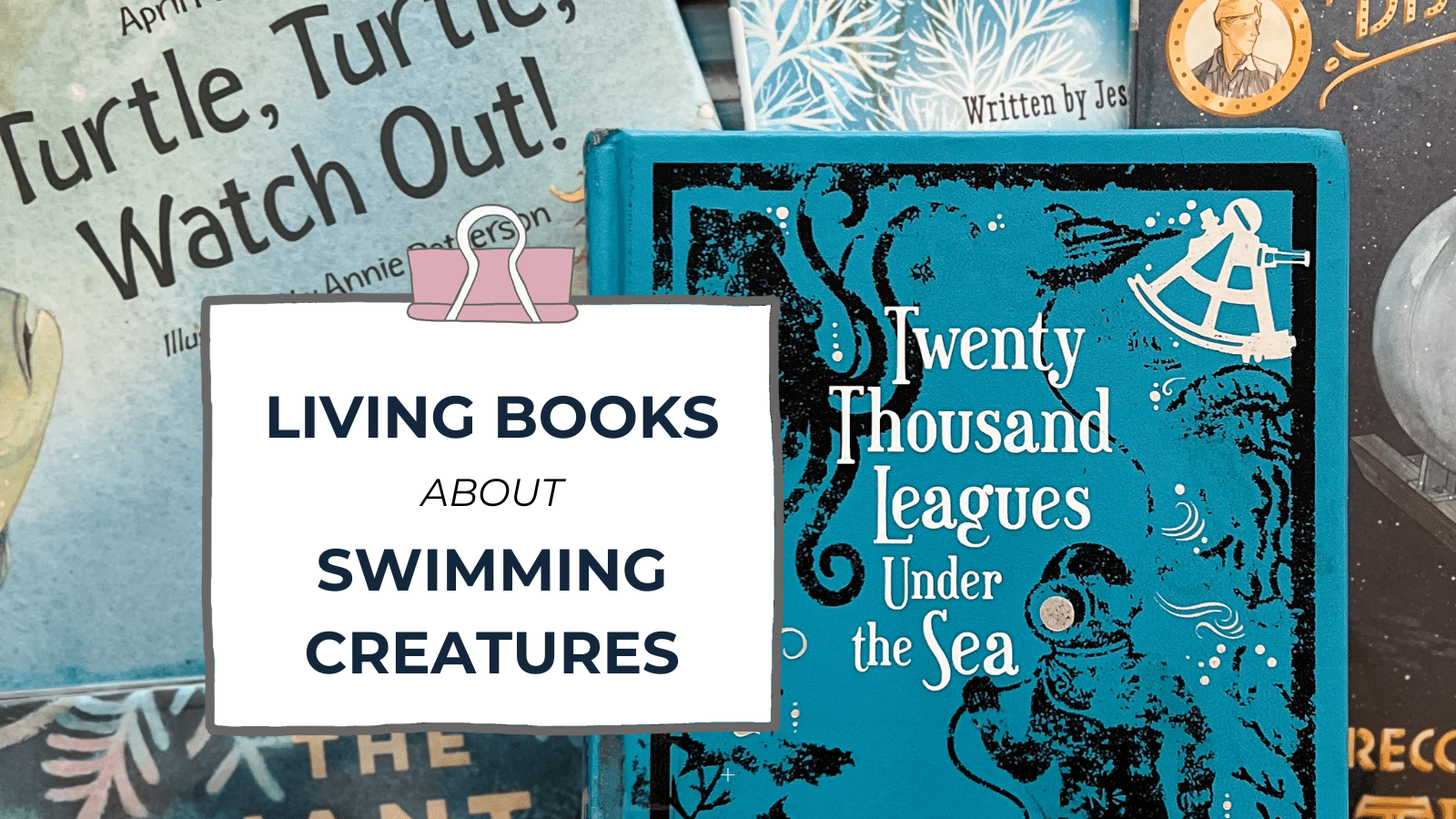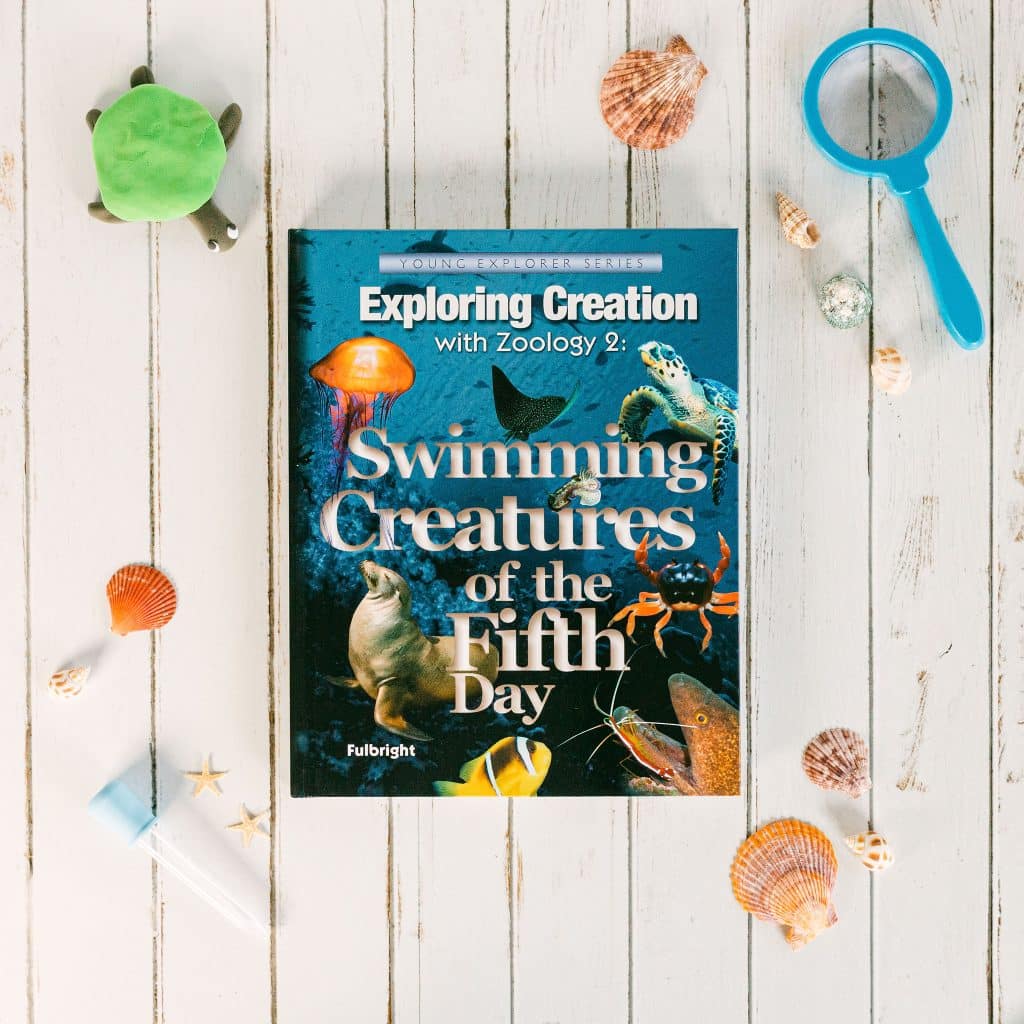
15 Living Books About Swimming Creatures
This blog series sharing living books to pair with science curriculum continues on with Apologia’s Exploring Creation with Zoology 2: Swimming Creatures. I personally love incorporating living books with great illustrations for this topic because the ocean and its inhabitants are so visually stunning.
Living Books vs. Textbooks
In the realm of education, the essence of a living book breaks the confines of a mere curriculum. It moves far beyond the boundaries of a classroom assignment, weaving itself intricately into the tapestry of an individual’s thoughts and emotions. Living books elicit engagement and depth of thought. To put it boldly, living books have the power to transform people.
Contrastingly, the antithesis of a living book emerges in the form of what many of us adults are familiar with – dry, lifeless textbooks. These educational giants, laden with information for information’s sake, exude a monotonous and hollow nature, showcasing only the essential facts but devoid of any enthusiasm.
Education, however, can and should be nothing short of rich. A child’s exploration of any subject should extend far beyond the terms and fragmented paragraphs found in textbooks. The most profound learning experiences often unfold through the art of storytelling. It is no coincidence that even Jesus, in His teachings of truths to the world, chose the medium of stories.
“We do not mean by a book any printed matter in a binding, but a work possessing certain literary qualities able to bring that sensible delight to the reader which belongs to a literary word fitly spoken.” (Charlotte Mason, “Parents and Children” pg. 263)
Apologia Textbooks
Now that you know the difference between living books and textbooks, let’s distinguish between a textbook and an Apologia textbook. Apologia authors are not only experts in their field, but many of them are home educators as well. They understand the Charlotte Mason philosophy, and have designed their textbooks with this as a guidepost.
You will find that each elementary textbook is written to the child, often in story format. You will discover key scientific facts, but they will be accompanied by photographs, storylines, and examples relevant to children. They are full of hands on experiments, encouragement to get outside, and a connection to the Word of God.
Living Books About Swimming Creatures
Here are some fantastic living books we found that would pair well with any study of marine life. Always check your local library first, as many of these titles are in public circulation.
- The Girl Who Built an Ocean: an Artist, an Argonaut, and the True Story of the World’s First Aquarium by Jess Keating
- Otis & Will Discover the Deep: the Record-Setting Dive of the Bathyspere by Barb Rosenstock
- The Brilliant Deep: Rebuilding the World’s Coral Reefs: the Story of Ken Nedimyer and the Coral Restoration Foundation by Kate Messner
- Elizabeth, Queen of the Seas by Lynne Cox
- Ice Whale by Jean Craighead George
- A House for Hermit Crab by Eric Carle
- Twenty Thousand Leagues Under the Sea by Jules Verne
- Yoshi and the Ocean: A Sea Turtle’s Incredible Journey Home by Lindsay Moore
- Joan Proctor, Dragon Doctor by Patricia Valdez
- Shark Lady: the True Story of How Eugenie Clark Became the Ocean’s Most Fearless Scientist by Jess Keating
- Kermit the Hermit by Bill Peet
- A City Under the Sea: Life in the Coral Reef by Norbert Wu
- Tiger with Wings: the Great Horned Owl by Barbara Juster Esbensen
- Turtle, Turtle, Watch Out! by April Pulley Sayre
- Hello Ocean by Pam Munoz Ryan
Exploring Creation with Swimming Creatures

Our Exploring Creation with Zoology 2: Swimming Creatures curriculum is part of the award-winning Young Explorer Series. God filled Earth’s waters with amazing marine creatures of all sizes. In this course, your student will explore the unique characteristics of swimming creatures of all sizes, and better understand the environments they live in.
The creatures your student studies will come to life as they create their own “Ocean Box” (a miniature hand-crafted aquarium) with replicas of the sea creatures they study. When your student completes this study of zoology, they will never view the ocean in the same way again.
If you want an enhanced experience with this course, we highly suggest the downloadable audio version read aloud by Jeannie Fulbright to supplement your study.
Our very own Davis and Rachael Carman recently talked about 5 Big Ideas From Charlotte Mason on the Let’s Talk Homeschool podcast.

